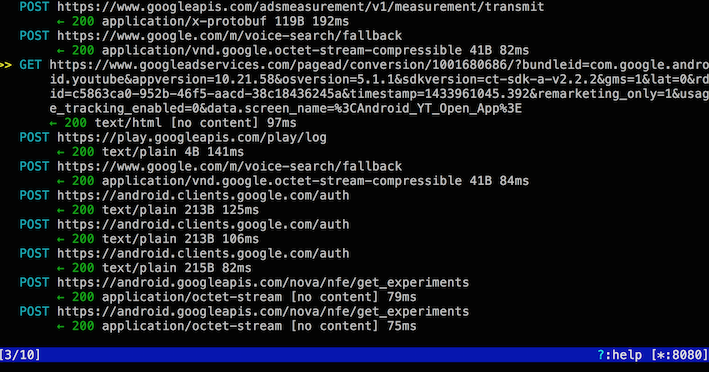How often does a *Google* Android device phones home?
So what about a Google Android device? Notice that I specifically added the word “Google” preceding Android as there are non-Google versions Android available (e.g., Cyanogenmod). I took a Nexus 5 and flashed it with Google’s factory Android image, version 5.1.1 (a.k.a., “stock” Android). Next I installed a mitmproxy certificate onto the phone, and captured all the HTTP and HTTPS traffic on the phone to mitmproxy running on my laptop. I left the phone stationery for one hour in another room. The result: 10 requests, 9 HTTP post requests.

Hmmm, seems like two of the requests were ad-related and two related to voice search?
The data sent back to Google is interesting. I posted the flow of all HTTP and HTTPS traffic from the Nexus running Android 5.1.1 for your analysis and interest: android.flow. You can open the file from mitmproxy.
People are getting worried about all of this creepiness, nonsense. So what can you do? The extreme option: don’t use a cell phone. Dan Geer doesn’t use one:
Another option: go back to a “flip phone.”
If you have an Android device, you can change the operating system to a non-Google Android such as Cyanogenmod. It is still Android, but without the bloat (hardly anything Google), and even features such as built-in root support.